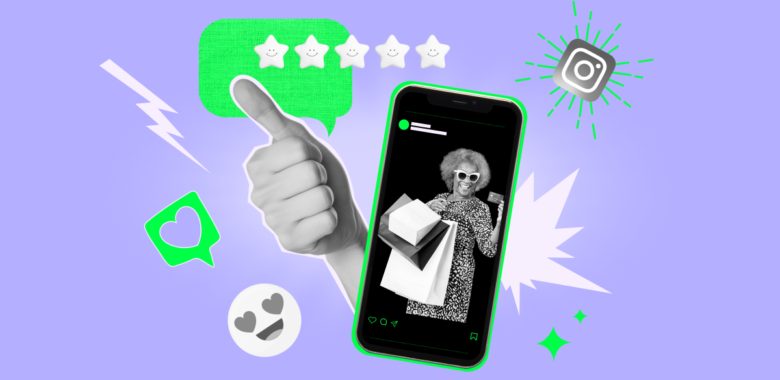Key benefits of using UGC for marketing
Now, we’ve come to the most interesting part: why exactly is UGC so valuable for marketers? Let’s zoom in on some of the biggest benefits of user-generated content for brands.
Making your brand more authentic, building trust, and fostering brand loyalty
UGC, especially when it’s organic, is super effective for making your brand more authentic and trustworthy to potential customers. In a survey conducted by Stackla, 59% of consumers said user-generated content is the most authentic one, as compared to brand ads and content produced by influencers.
What is more, clever UGC campaigns can help you increase brand loyalty and turn existing customers into brand advocates. That is because creating UGC allows people to feel a part of a community — especially if you provide feedback, let them join in discussions, or feature their content on your brand pages.
Scaling up campaigns with minimum investments
Also, marketing campaigns based on UGC are more cost-effective than both paid ad campaigns and influencer ads. So, for smaller businesses with tight marketing budgets, campaigns featuring consumer-generated content is a perfect way to scale up with minimum investments. While big influencers ask hefty sums for their services, organic UGC is practically free.
Even if you go for paid UGC, it is still going to cost you less than influencers and paid ads — and it will probably be more effective too. According to a case study by Roster, one of their clients’ ambassador programs turned out to be 85% more efficient than the brand’s influencer program.
Getting more conversions and increasing ROI
Most businesses are about making a profit, and leveraging consumer-generated content for marketing is a proven way to earn more if you apply it correctly. This is especially true for the e-commerce and retail industry: for example, according to research by Spiegel Research Center, featuring at least five customer product reviews on a product page can boost conversion by 270%.
Other studies also confirm the significance of UGC for generating purchases and making businesses more profitable. Research by Power Reviews reveals that featuring UGC of any type on product pages increases conversions by 8.5%, and Bazaarvoice mentions a study that showed a 31% conversion rate increase and a 45% revenue increase per user visit thanks to visual UGC.
Gleaning insights about your brand and products
Finally, customer feedback is a valuable source of information about your brand and products. By analyzing UGC, you can understand your strengths and weaknesses, learn more about your audience, and identify areas for improvement. Customer reviews are particularly helpful for this purpose, but you can also gain insights from social media content and other UGC.
Do all reviews mention a particular drawback or praise a certain feature in your product? Or do customers wish you would offer a certain service? This information can help you hone your existing products and services and even create new ones that your customers really want. Plus you can use it to highlight your greatest strengths and advantages in further marketing campaigns.















